80 Years Ago Lethal Nazi T4 Center Began Euthanizing Germans with Disabilities
After implementing tens of thousands ‘merciful deaths,’ Hartheim Castle’s crematoria personnel were sent to build Holocaust death camps in occupied Poland.
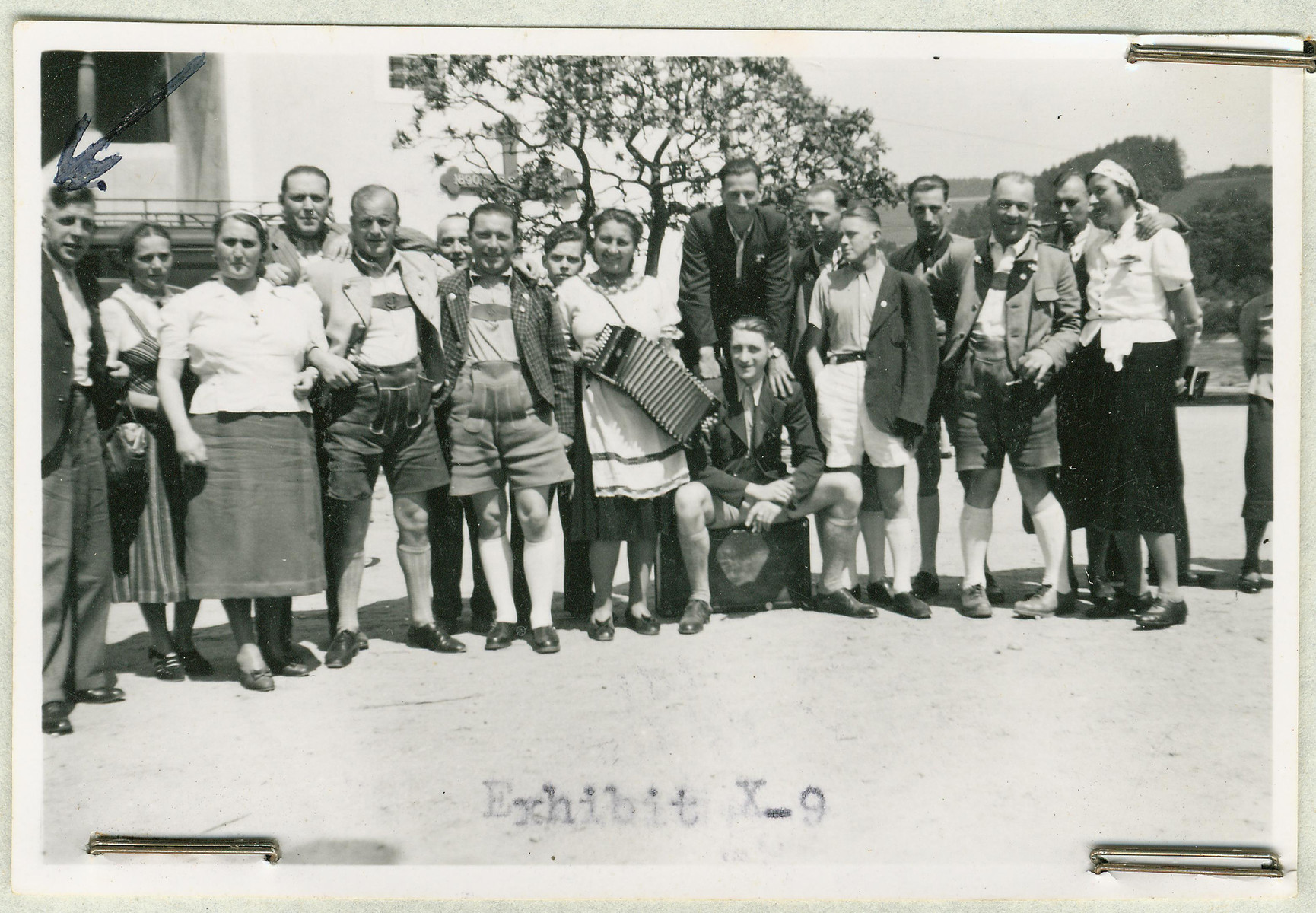
Staff of Hartheim Euthanasia Center in Alkoven (USHMM)
Eighty years ago this week, the most lethal “T4” euthanasia center began implementing “merciful deaths” for physically and mentally disabled Germans.
Hartheim Castle was not far from Austria’s Linz, where Adolf Hitler grew up. With Renaissance roots, the sprawling castle’s colonnaded courtyard was used by the Nazis for one of Hartheim’s two crematoria.
The plan for so-called “useless eaters” to be killed came from Nazi theories of eugenics, “racial hygiene,” and social Darwinism. By the end of the war, an estimated 230,000 people with physical or mental disabilities were murdered in “T4” and its successor program, sometimes called “wild euthanasia.”
After “T4” was supposedly halted in 1941, dozens of the Hartheim staff made their way to occupied Poland. At Chelmno, Sobibor, and Treblinka, they applied their know-how from the euthanasia centers to set up the first death camps for Jews.
“The death camps that followed took the technology to a new level,” said historian Michael Berenbaum. “The extermination camps could kill thousands at one time and burn their bodies within hours.”
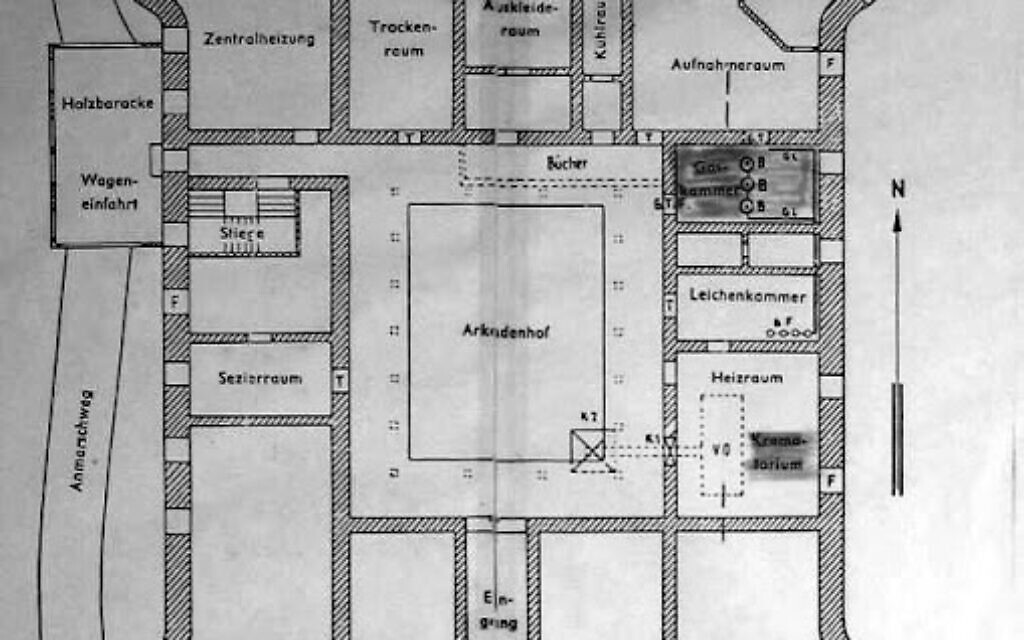
Lay-out of Hartheim Castle remodeled as a euthanasia center by Germany in 1940
At Hartheim Castle, 18,000 people were murdered “on the books” during “T4,” while an additional 12,000 victims were sent to their deaths after the 1941 halt order. These included Jewish inmates from Mauthausen, sick women from Ravensbruck, and political prisoners including priests.
Of six euthanasia centers set up by the Nazis, Hartheim had the highest victim count. Soon after liberation, a document called “The Hartheim Statistics” was discovered on-site. It was an accounting of money saved by “disinfecting” 70,273 asylum patients in terms of what they would have cost to maintain for one decade.
Also discovered in the castle was information about gold teeth extracted from victims after they were gassed, and records showing that families continued to send money to the centers even after their loved one was murdered.
To give quasi-scientific cover to the killings, thousands of victims’ brains were extracted and sent to German physicians to study “congenital idiocy” and other conditions. Simultaneously, the ashes of victims were sent to families at random, along with a condolence note about their relative’s untimely death from “pneumonia” or the highly contagious “pulmonary tuberculosis.”
According to the United States Holocaust Memorial Museum, the “T4” program “represented in many ways a rehearsal for Nazi Germany’s subsequent genocidal policies,” complete with bogus medical terminology, “selection” of victims for the gas chambers, and destruction of corpses by fire.
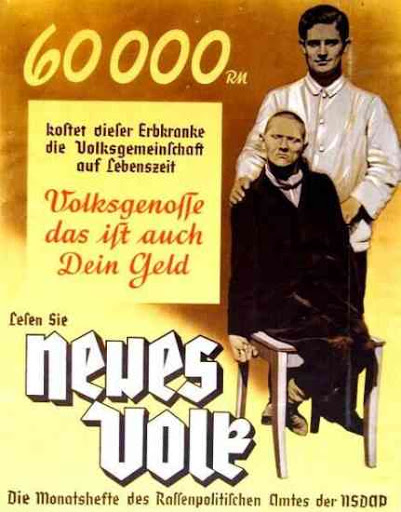
German Nazi propaganda poster on the ‘cost’ of keeping disabled people alive
Hitler’s 1939 decree had specified doctors should determine who receives “merciful deaths,” so the “T4” operation had to be given a medical appearance. Not only did doctors determine who died, but they usually operated the carbon monoxide gas tap at killings.
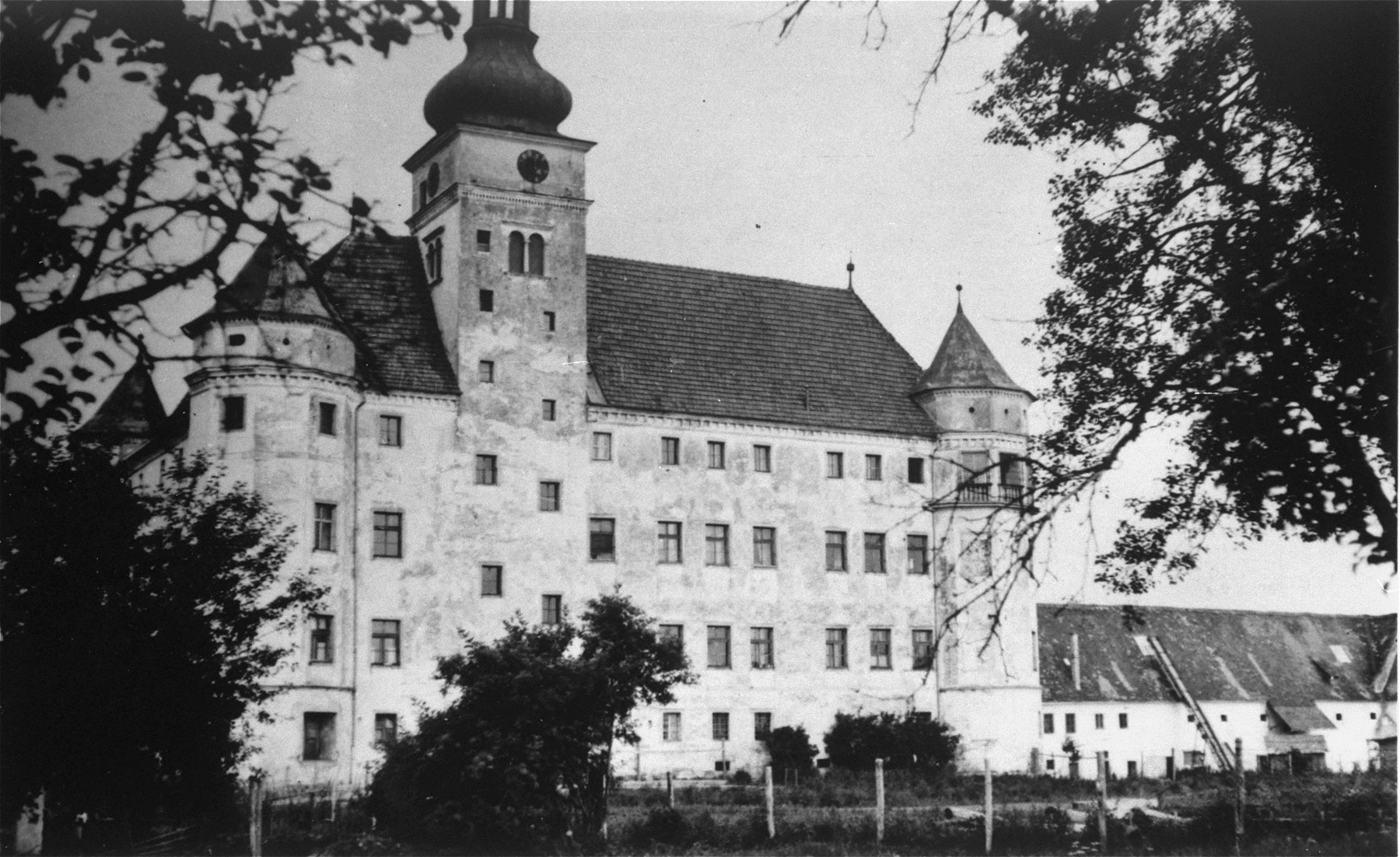
Hartheim Castle, site of a ‘T4’ euthanasia center from May 1940 though 1944, Alkoven, Austria
Within days of Hitler’s “merciful death” order, a euthanasia apparatus was set up to eliminate thousands of asylum patients across Germany. Operations staff were housed in Berlin at Tiergartenstrasse 4 — hence the nickname “T4” — in a house confiscated from a Jewish family.
"Not only did doctors determine who died, but they operated the carbon monoxide gas tap during the killings"
Inside headquarters, committees reviewed patient information cards for people suffering conditions such as schizophrenia, epilepsy, dementia, or other chronic disorders. Also examined were cards for the criminally insane and people who had been confined to an institution for more than five years.
By virtue of how many hours a patient was capable of working each week, as well as by how many visitors he or she received, the committee determined life or death.
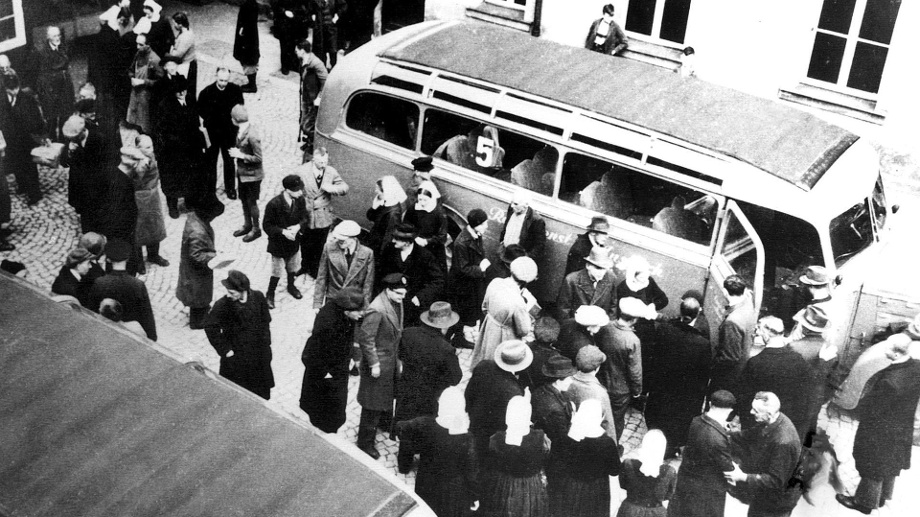
In Bruckberg, Germany, victims of the Nazis’ ‘T4’ euthanasia program are transported to killing centers
In the early months of “T4,” most of the victims were children. Some were handed over voluntarily by ashamed parents, such as when a new father wrote to Hitler asking for permission to kill his “deformed” infant. According to historians, that letter prompted Hitler to issue the order for “T4.”
The “Charitable Patient Transport Company” was set up to transfer victims from their asylums to six new killing centers, including Hartheim. The armed nurses had plenty of drugs on hand to calm down agitated patients in the dark grey buses with opaque windows.
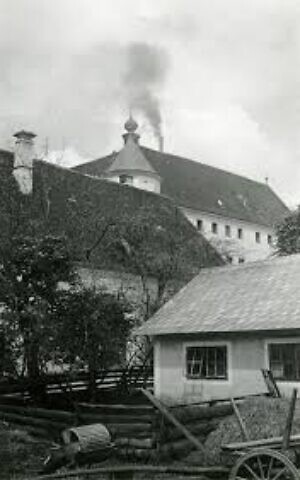 Hartheim Castle with crematoria smoke, 1940-41, Austria (Karl Schuhmann/Wolfgang Schuhmann)
Hartheim Castle with crematoria smoke, 1940-41, Austria (Karl Schuhmann/Wolfgang Schuhmann)Before the war, Hartheim Castle had served as a charitable “Idioten-Anstalt,” or psychiatric institution. The castle was in the middle of the town Alkoven, not far from Mauthausen and other concentration camps.
The central location of Hartheim turned out to be problematic, with foul-smelling smoke arising after buses delivered their human cargo. To the townspeople, it smelled like burnt flesh and hair.
Within months of “T4” starting, some Germans — including Nazi party members — sent protest letters to the Reich Chancellery and Minister of Justice. In February 1941,
Franconia was the scene of Catholics protesting the emptying of an asylum. Even some Protestant clerics — a group usually in line with Nazi policy — expressed dismay about the slaughter of disabled Germans.
‘Poor Human Beings’
In addition to public awareness of the euthanasia program, a tipping point was reached when an outspoken Catholic bishop escalated his rhetorical attacks on the regime.
The influential Clemens August Graf von Galen, the bishop of Munster, became known as the “Lion of Munster” for his homily denouncing the euthanasia program on August 3, 1941.
As the bishop told congregants, Germans were being murdered “because in the judgement of some official body, on the decision of some committee, they have become ‘unworthy to live,’ because they are classed as ‘unproductive members of the national community.’”
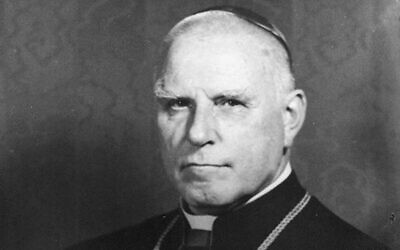
Bishop von Galen of Munster, Germany
The commandment not to kill, said von Galen, could not be erased by National Socialism, as it was written “on the souls of men.” He also asked if injured German soldiers would be subject to euthanasia upon returning from the front.
Von Galen’s sermon was reproduced and made its way around Germany. According to historian Anton Gill, the bishop “used his condemnation of this appalling policy to draw wider conclusions about the nature of the Nazi state.”
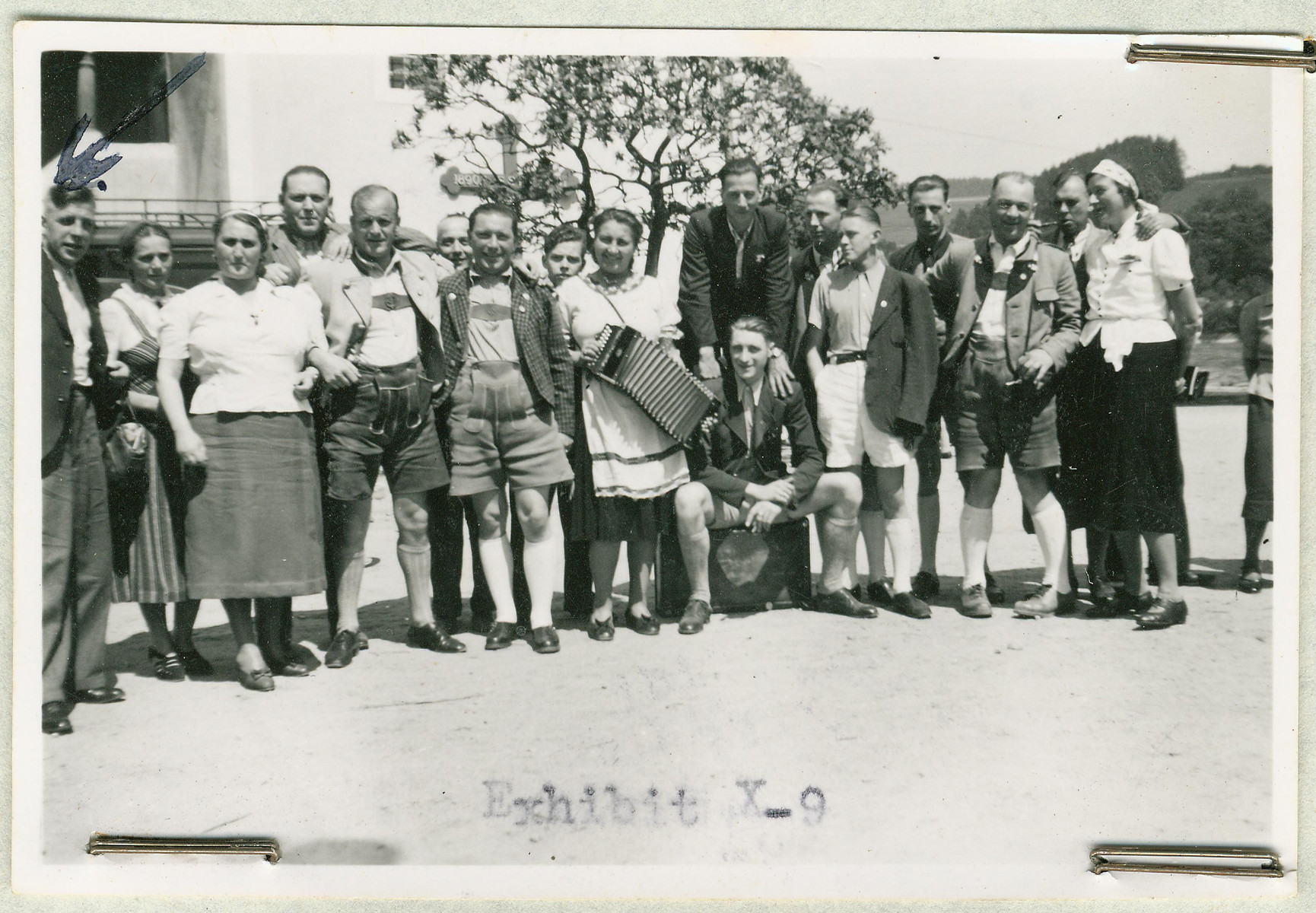
Staff of Hartheim Euthanasia Center in Alkoven (Dameron Report/NARA)
The same month as von Galen’s sermon, the regime “officially” halted the euthanasia program. The bishop was so influential in the heavily Catholic Westphalia region that the Nazis could not murder him without damaging morale. As such, von Galen was put under virtual house arrest.
In retrospect, we know the regime was preparing a much larger murder apparatus while “T4” was being pushed underground. From Hartheim, at least 27 staff people were sent to occupied Poland to build the death camps of “Operation Reinhardt,” including SS men whose names are synonymous with those camps.
At Chelmno, Treblinka, and Sobibor, the “T4” methods of killing were revived for the “disinfection” of Jews. The Holocaust transitioned from mass shootings in occupied Soviet lands to the death camps, where fewer Germans were needed to murder millions of Jews.
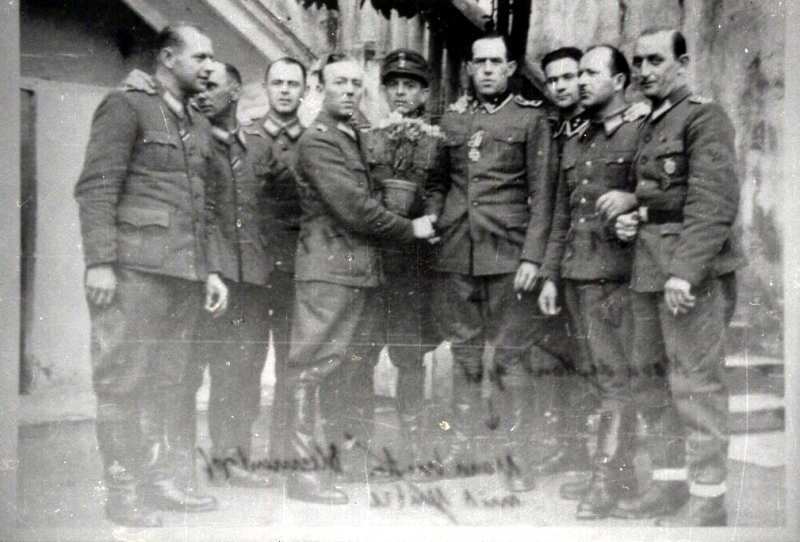
Staff of ‘T4’ euthanasia program visit Trieste, Italy (public domain)
Hartheim Castle remained in operation until 1944, including as an administrative center for the “T4” successor operation, called “14f13.” The last gassing took place on December 11, 1944, after which inmates from Mauthausen were brought in to dismantle and remove the gas chambers.
After the war, the castle was converted into apartments. In 1969 a memorial was built, but the tenants of 30 apartments were not moved from the castle until 1999. A museum and documentation center opened in 2003 to display artifacts excavated by chance from the garden, including remnants of the gas chambers and belongings of victims.


Thank you for sharing this!